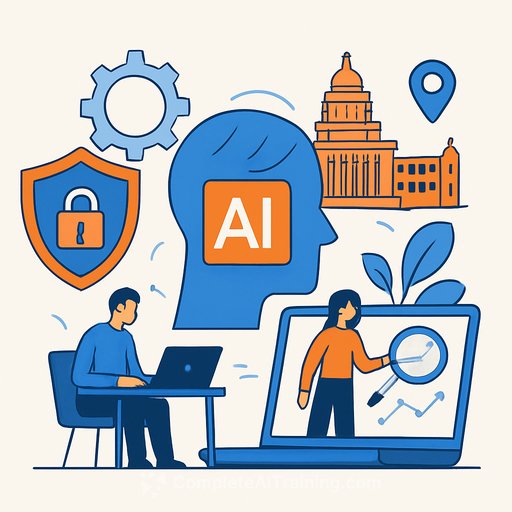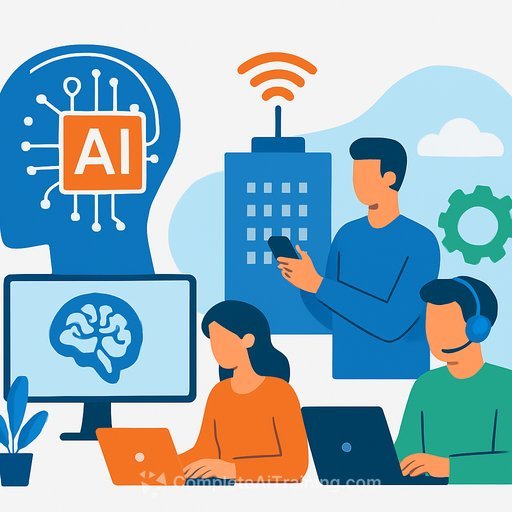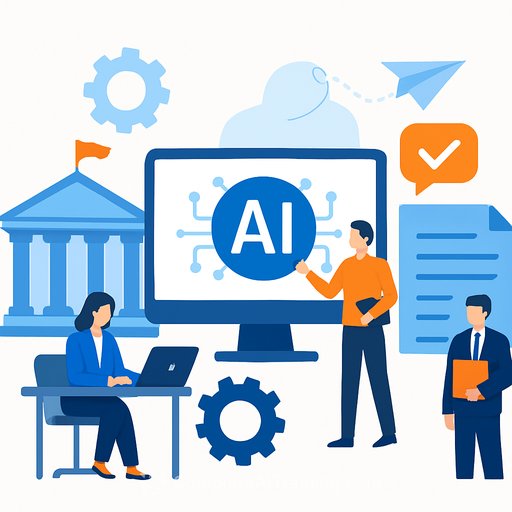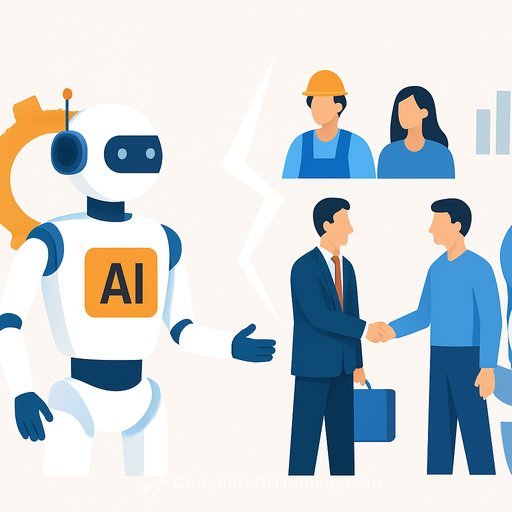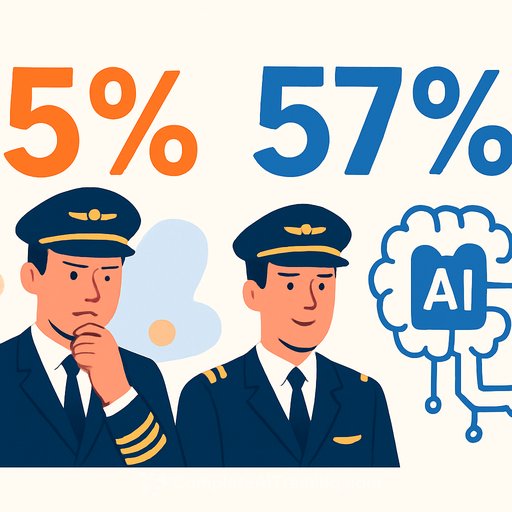AI Isn’t Just Crunching Numbers — It’s Changing How CFOs Lead
For decades, the CFO has been the go-to executive for interpreting complex financial data and translating it into strategic narratives that guide board decisions. This role was born from necessity: financial data is intricate, and stakeholders rely on trusted explanations to understand business performance. But artificial intelligence is shifting this dynamic.
Unlike traditional ERP systems that centralized data and reinforced CFOs as gatekeepers, AI tools are now spreading across operational departments. These tools generate new intelligence streams that complement financial oversight rather than bypass it. CFOs must evolve from gatekeepers controlling data access to orchestrators aligning diverse sources of organizational intelligence.
The Rise of Operational Intelligence
The Data Velocity Shift
Operational AI is changing decision-making cycles. Where finance traditionally reports monthly or quarterly, AI systems make thousands of micro-decisions daily, drawing on real-time data that would overwhelm human analysts.
Consider a company without an ERP system: a sales drop triggers a chain of meetings over several days to trace root causes—from customer complaints to logistics and maintenance staffing issues. An ERP might shorten this to hours, but AI can deliver answers in seconds by scanning finance, sales, CRM, and logistics data simultaneously. It can pinpoint delayed deliveries due to truck maintenance and recommend manpower adjustments instantly.
Sales AI: From Reports to Predictive Revenue
Sales teams no longer wait for month-end reports. AI-powered CRMs like Salesforce Einstein and HubSpot’s predictive analytics provide real-time insights, identifying stalled deals, predicting churn, and suggesting effective conversation strategies based on thousands of interactions.
This changes the CFO’s traditional role in revenue interpretation. When sales leaders can show AI-backed improvements in pipeline velocity, operational intelligence takes center stage in forecasting.
Marketing AI: Predicting Customer Behavior
Marketing has embraced AI aggressively to prove ROI in a complex digital environment. Tools like Adobe Experience Platform and generative AI predict which content will resonate with customer segments, optimize campaigns in real-time, and identify high-value prospects before they enter the sales funnel.
This shifts budget decisions from retrospective financial data to forward-looking marketing intelligence, challenging the CFO’s historical control over marketing spend.
Operations AI: Autonomous Decisions Impacting Finance
Operations and supply chain AI systems now make autonomous decisions affecting financial outcomes without CFO approval. Manufacturing AI optimizes production schedules, inventory, and procurement by analyzing variables like weather, geopolitics, social sentiment, and real-time quality data.
When AI predicts and prevents costly supply chain disruptions, operational insights can outweigh traditional financial analysis. IBM highlights AI’s ability to improve supply chain decision-making and efficiency by processing vast real-time data.
The Erosion of Financial Monopoly on Truth
Real-Time vs. Retrospective Insights
Financial reporting is inherently backward-looking. AI tools provide predictive and prescriptive insights, identifying and preventing problems before they escalate. This elevates forward-looking intelligence as the more strategic resource.
Data Science Becomes Everyone’s Tool
AI democratizes analytics. Modern AI tools allow marketing managers, sales specialists, and supply chain analysts to generate predictive models without deep data science expertise. As every department builds its own analytics, the CFO’s role as sole data interpreter naturally shifts.
Trusting Algorithms vs. Human Expertise
Younger executives often trust AI insights more than human judgment, especially when backed by large datasets and sophisticated models. Research shows 41% of Gen Z trust AI over humans, with half preferring AI for work-related advice.
This creates tension when CFO forecasts conflict with AI-driven predictions. While AI advice can lead to overconfidence and errors, combining AI insights with transparent certainty levels and human judgment results in better decisions. CFOs must foster collaboration between AI and teams to balance strengths and limitations.
The Shadow AI Phenomenon
Like the “shadow IT” trend where teams created workarounds for inadequate systems, “shadow AI” tools are now emerging. These agile AI applications often outperform centralized finance platforms in responsiveness and accuracy.
For example, a customer success team might use an AI tool to predict churn with 94% accuracy, enabling proactive retention before finance even detects issues. This isn’t isolated but reflects a broader shift where operational teams adopt AI that meets their immediate needs faster than enterprise solutions.
While shadow AI may sacrifice some governance, it delivers timely intelligence and widens the gap between what finance perceives and what operations know. Research confirms employees lead AI adoption ahead of IT, favoring tools that boost productivity quickly.
The New Executive Dynamic
From Gatekeepers to Orchestrators
Successful CFOs embrace their evolving role as data orchestrators. Rather than controlling access, they ensure AI insights from various departments align and support strategic decisions. CFOs must grasp AI’s capabilities, limitations, and biases to synthesize diverse analytics into coherent guidance.
Cross-Functional Intelligence Teams
Some organizations form cross-departmental teams including finance, operations, sales, and marketing. These groups align AI-generated insights across functions and prevent conflicting predictive models. This acknowledges that no single department holds a monopoly on business intelligence in an AI-driven environment.
Flattening Information Hierarchies
Operational AI accelerates the flattening of information hierarchies beyond traditional ERP and BI systems. AI provides real-time, predictive, and actionable insights flowing horizontally across teams and vertically to leadership. Boards increasingly hear directly from operational leaders presenting AI-driven forecasts, shifting the narrative from past results to future outcomes.
Challenges and the Path Forward
Integration Complexity
Integrating multiple AI predictions into coherent financial projections remains difficult. When sales, marketing, and operations AI offer differing forecasts, CFOs must reconcile these into unified strategies. Hybrid intelligence models combining operational AI with financial oversight yield the best results.
Quality Control and Compliance
CFOs often question the quality, accuracy, and bias of operational AI data. Unlike standardized financial data, operational data is messy and less regulated. In regulated industries, CFO oversight ensures compliance, preserving some gatekeeping while adapting to new oversight methods.
The Audit Trail Challenge
AI-driven decisions complicate audit trails. When algorithms autonomously adjust pricing or inventory, tracing decisions is complex. CFOs remain accountable but may not fully understand AI systems. Implementing “explainable AI” can improve transparency but may reduce speed, which operational teams resist.
The Trust Paradox
Executives often trust AI for personal tasks but hesitate with business decisions due to higher stakes and less transparency. Younger leaders, familiar with AI from personal experience, are more willing to trust operational AI insights, creating generational divides in boardrooms.
For example, a younger VP of Operations’ AI recommendations may conflict with an older CFO’s financial forecasts, sparking debates about decision-making authority beyond just data.
The Future of Executive Decision-Making
Traditional CFO dashboards and reporting cycles suited a time of information scarcity. Today, information is abundant. The challenge is synthesizing multiple AI-generated intelligence streams into strategic decisions.
CFOs’ financial governance expertise remains vital, but strict control can limit operational agility needed in AI-driven businesses. Organizations benefit by empowering neutral leaders or cross-functional teams to guide AI adoption while CFOs maintain stewardship.
Companies built around AI often have roles like chief AI officers reporting directly to CEOs, bypassing traditional finance hierarchies. The static dashboard is replaced by real-time, multi-dimensional intelligence flowing across organizations.
The key question: will your company cling to old control models or build a culture where every function uses real-time AI insights? Executives who adapt their leadership styles to this new reality will define the next era of corporate decision-making.
Your membership also unlocks:



